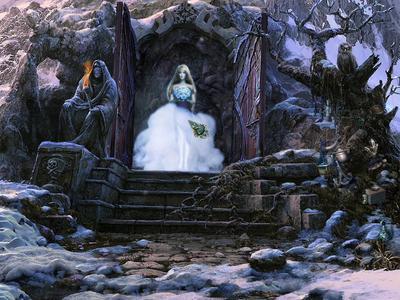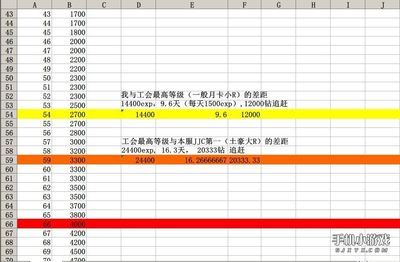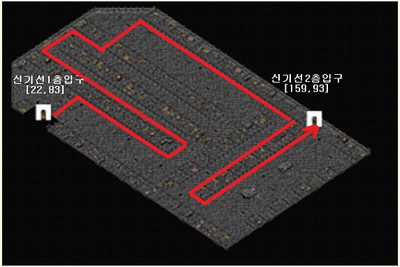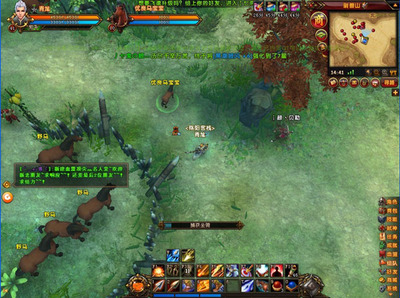From Wikipedia, the free encyclopedia
The Roman de la rose, pronounced: [ʁɔmɑ̃ də la ʁoz], is amedieval French poem styled as an allegorical dream vision. It is anotable instance of courtly literature. The work's stated purposeis to both entertain and to teach others about the Art of Love. Atvarious times in the poem, the "Rose" of the title is seen as thename of the lady, and as a symbol of female sexuality in general.Likewise, the other characters' names function both as regularnames and as abstractions illustrating the various factors that areinvolved in a love affair.
History
The poem was written in two stages. The first 4058 lines,written by Guillaume de Lorris circa 1230, describe the attempts ofa courtier to woo his beloved. This part of the story is set in awalled garden or locus amoenus, one of the traditional topoi ofepic and chivalric literature. In this walled garden, the interiorrepresents romance, while the exterior stands for everyday life. Itis unclear whether Lorris considered his version to be incomplete,but it was generally viewed as such. Around 1275, Jean de Meuncomposed an additional 17,724 lines. Jean's discussion of love isconsidered more philosophical and encyclopedic, but also moremisogynistic and bawdy. The writer Denis de Rougemont felt that thefirst part of the poem portrayed Rose as an idealised figure, whilethe second part portrayed her as a more physical and sensualbeing.[1] Still, much recent scholarship has argued for theessential unity of the work, which is how it was received by latermedieval readers.
Reception
The work was both popular and controversial—one of the mostwidely read works in France for three centuries. Its emphasis onsensual language and imagery provoked attacks by Jean Gerson,Christine de Pizan and many other writers and moralists of the 14thand 15th centuries. Historian Johann Huizinga writes, “It isastonishing that the Church, which so rigorously repressed theslightest deviations from dogma of a speculative character,suffered the teaching of this breviary of the aristocracy (for theRoman de la Rose was nothing else) to be disseminated withimpunity.”[2]
Manuscripts and incunabula
About 300 manuscripts are extant,[3], one of the highestfigures for a secular work. Many of these are illustrated, mostwith fewer than ten remaining illustrations, but there are a numberwith twenty or more illustrations,[4] and the exceptionalBurgundian British Library Harley MS 4425 has 92 large and highquality miniatures, despite a date around 1500; the text was copiedby hand from a printed edition. These are by the artist known asthe Master of the Prayer Books of around 1500, commissioned byCount Engelbert II of Nassau[5] The peak period of production wasthe 14th century, but manuscript versions continued to be produceduntil the advent of printing, and indeed afterwards - there are atleast seven manuscripts dated after 1500.[6] There are also sevenincunabula printed editions before 1500, the first from Geneva inabout 1481, followed by two from Lyons in the 1480s and four fromParis in the 1490s.[7] An edition from Lyons in 1503 is illustratedwith 140 woodcuts.[8]Digital images of more than 140 of thesemanuscripts are available for study in the Roman de la Rose DigitalLibrary.
Translation and influence
Part of the story was translated from its original Old Frenchinto Middle English as The Romaunt of the Rose, which had a greatinfluence on English literature. Chaucer was familiar with theoriginal French text, and a portion of the Middle Englishtranslation is thought to be his work. There were several otherearly translations into languages including Middle Dutch (Heinrikvan Aken, c. 1280). Il Fiore is a "reduction" of the poem into 232Italian sonnets by a "ser Durante", sometimes thought to have beenDante, although this is generally thought unlikely. Dante nevermentions the Roman, but is often said to have been highly consciousof it in his own work. C. S. Lewis's 1936 study The Allegory ofLove renewed interest in the poem.
Gallery
See also
Romance (heroic literature)Courtly loveCourtly literatureAllegory in the Middle Ages
Notes
^ Rougemont, Denis de. L'amour et l'Occident, p. 192.Bibliothèques 10/18, Librairie Plon, 1972. ISBN 2-264-02562-X^ Huizinga, Johann, The Waning of the Middle Ages (New York:Anchor Books, 1989) p. 334 ISBN 0-385-09288-1^ Roman de la Rose Digital Library, Project History^ Roman de la Rose Digital Library; not complete^ British Library^ Roman de la Rose Digital Library^ British Library, Incunabula Short Title Catalogue^ Rosenwald 917, Library of Congress
References
Guillaume de Lorris et Jean de Meun, Le Roman de la Rose,présentation, traduction et notes par Armand Strubel. Lettresgothiques, Livre de Poche, Librairie Générale Française, 1992. ISBN2-253-06079-8.Guillaume de Lorris and Jean de Meun, The Romance of the Rose,translated and annotated by Frances Horgan. Oxford World'sClassics, Oxford University Press, 1999. ISBN 0-19-283948-9.McWebb, Christine (ed.), Debating the Roman de la rose: ACritical Anthology. Trans. by Earl Jeffrey Richards. Series:Routledge Medieval Texts. New York: Routledge, 2007.
Guillaume de Dole

From Wikipedia, the free encyclopedia
Guillaume de Dole (also known as (Le) Roman(s) de la Rose, orGuillaume de Dole) is an Old French narrative romance by JeanRenart. Composed in the early thirteenth century, the poem is 5656lines long and is especially notable for the large number ofchansons it contains, and for its active female protagonist. Theromance incorporates forty-six chansons (or parts thereof); it isthe first extant example in French literature of a text thatcombines narrative and lyric. Its form was quickly imitated, byauthors such as Gerbert de Montreuil, and by the end of the 13thcentury had become canonical.The poem tells of the adventures of the titular character andhis sister Liénor. Guillaume is accepted at the court of EmperorConrad who has fallen in love with Liénor despite his earlieraversion to love and marriage. Guillaume becomes one of theemperor's favorites and marriage negotiations proceed in a positivemanner. The emperor's seneschal, however, discovers an intimatedetail about Liénor's body and uses it to insinuate to the emperorand his court that she is no longer a virgin; the clever Liénor,with a ruse, proves his accusation false and marries theemperor.
Manuscript, date, author
ManuscriptGuillaume de Dole is extant in a single manuscript in theVatican library, MS Regina 1725. Todd dates it in the 14thcentury,[1] others in the late 13th century.[2] The manuscriptcontains:Lancelot, the Knight of the Cart, by Chrétien de Troyes (firstpart missing), 1-34b;Yvain, the Knight of the Lion, also by Chrétien,34c-68b;Guillaume de Dole, 68c-98c;Meraugis de Portlesguez, by Raoul de Houdenc, 98d-130d.The manuscript's first known owner was 16th-century Frenchhistorian Claude Fauchet; it was part of his extensive collection,and it is due to "Fauchet's zeal as a collector" that themanuscript and therefore the poem are preserved. During the FrenchWars of Religion, Fauchet fled Paris and his collection wasdispersed. The next mention of the manuscript is as part of thelibrary of a Paul Pétau, and in 1650 it was acquired by Christina,Queen of Sweden. The Vatican library acquired the manuscript after1689.[3]
Date and titleThe opening lines of the poem contain a dedication to Miles deNanteuil, an early 13th-century churchman who was elected (but notconfirmed) in 1201 as archbishop of Reims, and later became bishopof Beauvais, in northern France; he died circa 1235. According toTodd, the nobleman de Nanteuil may have been too young and wild tobe elevated to the archbishopric, but this would have made him agood candidate for Renart's dedication. This, plus evidence basedon other names found in the poem, led Todd to conclude that thepoem was composed around the year 1200.[4] Later critics andresearchers, however, date the poem between 1204 and 1228, and tendtoward the earlier date.[5]In the manuscript, the poem is called Romans de la Rose (l.11), and hence Le Roman de la Rose, but it is often referred to asRoman de la Rose, or Guillaume de Dole in order to avoid confusionwith Guillaume de Lorris and Jean de Meun's Roman de la Rose;[6]Guillaume de Dole is a subtitle added by Fauchet.[3][5]
AuthorshipIt wasn't until the late 19th century that scholars (includingPaul Meyer) began entertaining the notion that Jean Renart, untilthen only known as the presumable author of the Lai de l'Ombre,might also be responsible for either or both of the twocontemporary romances L'Escoufle and Guillaume de Dole.[7] F.M.Warren of Yale University, in a 1908 article, is one of the earlyproponents of identifying Renart as the author of all three, basedon versification, phrasing, and vocabulary, and places thedevelopment of his poetic talent between 1195 and 1205.[8] Thenext-to-last line of the poem contains an acrostic on Renart'sname: "...qu'il enTRA EN Religion."[9]
Content
PlotThe story begins at the court of Emperor Conrad, who for allof his good qualities has one defect: he refuses to get married,especially since, as he says, people no longer are as valiant andas noble as they used to be. His minstrel, Jouglet, tells him ofGuillaume de Dole and his sister Liénor, and quickly the emperorfalls in love with her, although he does not actually see her untilthe story's denouement. Guillaume is summoned to the court where heexcels in chivalric exploits; the emperor tells him he wishes tomarry his sister. Conrad's jealous seneschal interferes and visitsGuillaume's family, where he gives his mother a valuable ring andgains her confidence; from her he learns that Liénor has aparticular birthmark in the shape of a rose on her thigh.[10][11]This knowledge is presented as proof that Guillaume has taken hervirginity.[10]As a result of the accusation, both Guillaume and Conrad aredistraught, to the point of misogyny. The clever Liénor, however,her reputation slandered, unmasks the seneschal with a ruse. Shehas a belt and other gifts sent to the seneschal, supposedly fromthe Chatelaine of Dijon, whom he had courted, with promises thatthe Chatelaine is ready to grant him his wishes. The messengerconvinces the seneschal to wear the belt under his clothes. Liénorthen goes to Conrad's court, where everyone is struck by herbeauty, and pretends to be a maiden who was raped by the seneschal;the belt is discovered under his clothes and a trial by ordeal isproposed. The seneschal's innocence is proven in an ordeal bywater: he has never had sex with the maiden. When Liénor revealsthat she is in fact Guillaume's sister, the seneschal's earlierclaim of having deflowered her is proven a lie. The seneschal isshackled and incarcerated, and the wedding is celebrated with greatpomp.[11] On the wedding night, Conrad's happiness is greater thanthat of Tristan or Lanval; the next morning, "no one who asked[Conrad] for a costly gift was refused."[12] As for the seneschal,Liénor implores Conrad to be merciful, and he is sent away as aTemplar to join a crusade.
ThemesThe plot of Guillaume revolves around the common theme of thegageure, a young man who, because of a wager (in the case ofGuillaume, because of jealousy) needs to find a young woman'sfavor. He fails in his enterprise but pretends publicly to havesucceeded, causing the ruin of a husband (if the gageure hadclaimed to have succeeded with another man's wife) or, in thiscase, the despair of a brother. Usually the young man's story isbelieved at first because he reveals an intimate detail about ayoung woman, who then has to prove her innocence.[13]Beginning with Michel Zink, whose influential 1979 monographRoman rose et rose rouge: Le Roman de la rose ou de Guillaume deDole ushered in a new era of criticism,[14] critics have recognizedGuillaume de Dole as a work of literature about literature, aself-referential poem that comments on the improbability of some ofits own plot elements and on its own fictional status, encouraginga trend in studies of Renart and his work.[15]
SongsThe romance contains some 46 chansons, which can be separatedinto two groups, according to Holier and Bloch. The first groupcontains sixteen "aristocratic" chansons courtoises on the topic ofcourtly love, attributed to specific trouvères (including GaceBrulé, Le Chastelain de Couci, Vidame de Chartres, Jaufre Rudel,and Bernart de Ventadorn). A second group consists of thirty mostlyanonymous songs of a more popular nature, such as three chansons detoile and three other ballads, two pastourelles, and twentychansons à danser (dance songs). Incorporated also is a laisse ofthe chanson de geste Gerbert de Metz.[11] Different scholars haveslightly different counts; where Holier and Block count threeballads and three chanson de toiles, Maureen Barry McCann Boultoncounts six chansons de toile; in her detailed investigation of thechansons she claims the poem contains forty-six chansons in eightdifferent genres.[16]In its hybrid form, Guillaume de Dole is "the first extantexample of the combined use of narrative and lyric in French."[17]The mixed form proved to be popular and was soon found in otherworks, including Aucassin and Nicolette (early 13th. c.); Gautierde Coincy's Les Miracles de Nostre-Dame (ca. 1218–1233);[18]Gerbert de Montreuil's Le Roman de la Violette (ca. 1230), whichincorporates some forty songs; and Tibaut's Roman de la Poire (ca.1250), which incorporates a series of refrains. By the end of thecentury the form had become canonical.[19]
Female protagonistThe female protagonist, Liénor, is notable because of heractive nature: she herself unmasks the seneschal. She found a quicksuccessor in the active female protagonist of Tibaut's Roman de laPoire.[20] At least one recent publication states that Liénor mightmake a justifiable claim to being the romance's truehero.[21]
Editorial and critical history
The first mention of Guilllaume de Dole after the Middle Agesis found in the work of Claude Fauchet, who is generally consideredto have studied the Vatican Regina manuscript (instead of another,now lost, manuscript). In 1844, Adelbert Keller published extractsof the poem including some of the chansons; the chansons acquiredsome fame, and in 1850 Darenberg and Renan traveled to Rome tostudy the manuscript, publishing a larger number of the chansons in1855. It wasn't until 1870 that all of the chansons had beenpublished.[22] A lengthy analysis, partial edition, and summary inEnglish was published by Henry Alfred Todd of Johns HopkinsUniversity, in 1886. The poem was finally published in its entiretyin 1893 by Gustave Servois[3] for the Société des anciens textesfrançais.The first comprehensive study of the work of Jean Renart waspublished in 1935 by Rita Lejeune-Dehousse, who published anedition of the poem in 1935. Since then, it has been republishedregularly. Translations have been published in modern French(1979), German (1982), and English (1993, 1995).[15]Between 2001 and 2007, Joshua Tyra adapted the text into amusical. An early version was read at the University ofChicago.[23]
Modern editions and translationsAndrieu, G.; J. Piolle, M. Plouzeau (1978). Le Roman de larose, ou, De Guillaume de Dole de Jean Renart; Concordanciercomplet des formes graphiques occurentes, d'après l'édition deFélix Lecoy. Aix-en-Provence. ISBN 2-901013-0-4.Dufournet, Jean (2008). Le Roman de la rose ou de Guillaume deDole. Honoré Champion.Lecoy, Félix (1971). Le Roman de la rose ou de Guillaume deDole. Paris.Terry, Patricia; Nancy Vine (1993). The Romance of the Rose orGuillaume De Dole. U of Pennsylvania P. ISBN 0-8122-1388-2.Todd, Henry Alfred (1886). "Guillaume de Dole: an unpublishedOld French romance". Transactions of the Modern LanguageAssociation of America (Modern Language Association): 107–57.[edit]Critical studiesDurling, Nancy Vine (1997). Jean Renart and the Art ofRomance: Essays on Guillaume de Dole. UP of Florida. ISBN0-8130-1495-6.Zink, Michel (1979). Roman rose et rose rouge: Le Roman de larose ou de Guillaume de Dole, de Jean Renart. Paris: Nizet.
References
Notes^ Todd 107.^ Callahan 43.^ a b c Durling 4.^ Todd 144-48.^ a b Terry and Durling 1.^ Bruckner 112.^ Warren 69.^ Warren 72–73^ Terry and Durling 104.^ a b Terry and Durling 4.^ a b c Holier and Bloch 91.^ Terry and Durling 93.^ Lacy 779.^ Baldwin 256.^ a b Durling 5.^ McCann Boulton 85.^ Terry and Durling 2.^ Butterfield 74.^ Holier and Bloch 91–92.^ Holier and Bloch 92.^ Terry and Durling 12.^ Todd 107–109.^ Tyra.
BibliographyBaldwin, John W. (2002). Aristocratic Life in Medieval France:The Romances of Jean Renart and Gerbert de Montreuil, 1190–1230.JHU Press. ISBN 0-8018-6912-9.Bruckner, Matilda Tomaryn (1999). "Romancing History andRewriting the Game of Fiction: Jean Renart's Rose Through theLooking Glass of Partonopeu de Blois". In Kathryn Karczewska, PerNykrog, Tom Conley. The world and its rival: essays on literaryimagination in honor of Per Nykrog. Rodopi. pp. 112. ISBN90-420-0697-8. Retrieved 2 March 2010.Butterfield, Ardis (1997). Joseph Harris, Karl Reichl. ed.Prosimetrum: crosscultural perspectives on narrative in prose andverse. Boydell & Brewer. pp. 67–98. ISBN0-85991-475-5. Retrieved 2 March 2010.Callahan, Christopher. "Interpolating the Musical Text of theLyric Interpolations: Guillaume de Dole the Trouvere ManuscriptTradition". Essays in Medieval Studies 8: 43–55.Durling, Nancy Vine (1997). "Introduction". In Nancy VineDurling. Jean Renart and the Art of Romance: Essays on Guillaume deDole. UP of Florida. pp. 1–10. ISBN 0-8130-1495-6.Hollier, Denis; R. Howard Bloch (1994). A new history ofFrench literature. Cambridge: Harvard UP. pp. 91. ISBN0-674-61566-2.Lacy, Norris J. (May 1981). "'Amer par oïr dire': Guillaume deDole and the Drama of Language". The French Review 54 (6): 779–87.ISSN 0016-111X. JSTOR 390770. OCLC 50709544.McCann Boulton, Maureen Barry (1997). "Lyric Insertions andthe Reversal of Romance Conventions in Jean Renart's Roman de laRose or Guillaume de Dole". In Nancy Vine Durling. Jean Renart andthe Art of Romance: Essays on Guillaume de Dole. UP of Florida. pp.85–104. ISBN 0-8130-1495-6. Retrieved 30 January 2010.Todd, Henry Alfred (1887). Guillaume de Dole: an unpublishedOld French romance. Johns Hopkins University.Terry, Patricia; Nancy Vine Durling (1993). The Romance of theRose or Guillaume De Dole. U of Pennsylvania P. ISBN0-8122-1388-2.Tyra, Joshua (2006). "The Romance of the Rose – A Musical byJoshua tyra". Retrieved 2 March 2010.Warren, F.M. (March 1908). "The Works of Jean Renart, Poet,and their Relation to Galeran de Bretagne". Modern Language Notes23 (3): 69–73. Retrieved 31 January 2010.
Jean Renart
From Wikipedia, the free encyclopedia
Jean Renart, also known as Jean Renaut, was a Norman trouvèreor troubadour from the end of the 12th century and the first halfof the 13th century to whom three works are ascribed. Nothing elseis known of him or his life. He is praised for his realism and hispsychological insight.[1]Firmly attributed to him are two metrical romances, L'Escoufle("The kite") and Guillaume de Dole, and a lai, Lai del’Ombre.
L'Escoufle
Vigneras proposed in 1933 that the dates for Jean Renaut wouldhave to be moved up: while other scholars dated his activities to1195 and 1215, he dated L'Escoufle after 1245.[2]
Guillaume de Dole
Guillaume de Dole, "generally regarded as his chefd'oeuvre,"[3] is a longer narrative poem, notable for itsincorporation of a large number of shorter lyric poems, including anumber of chansons de toile.[4] The date of composition is usuallyplaced early in the thirteenth century.[5]
References
^ "Renart, Jean."^ Vigneras 241.^ Durling 2.^ "Chanson de toile."^ Terry and Durling 1.
Bibliography
"Chanson de toile". Harvard Dictionary of Music. Harvard UP.2003. p. 161. Retrieved 2010-01-30.Durling, Nancy Vine (1997). "Introduction". In Nancy VineDurling. Jean Renart and the art of romance: essays on Guillaume deDole. UP of Florida. pp. 1–10. ISBN 9780813014951. Retrieved 16November 2010."Renart, Jean". Columbia Encyclopedia, 6th ed. ColumbiaUniversity Press. 2007. Retrieved 2010-11-14.Terry, Patricia; Nancy Vine Durling (1993). The Romance of theRose or Guillaume De Dole. U of Pennsylvania P. ISBN9780812213881.Vigneras, Louis André (1933). "Etudes sur Jean Renart I. Surla Date du Roman de l'Escoufle". Modern Philology 30 (3): 241–262.JSTOR 434445.
Guillaume de Lorris
From Wikipedia, the free encyclopedia
Guillaume de Lorris (c. 1200 – c. 1240) was a French scholarand poet from Lorris. He was the author of the first section of theRoman de la Rose.[1] Little is known about him, other than that hewrote the earlier section of the poem around 1230, and that thework was completed forty years later by Jean de Meun.
Jean de Meun
From Wikipedia, the free encyclopedia
Jean de Meun (or de Meung, pronounced: [ʒɑ̃ də mœ̃]) (c. 1240– c. 1305) was a French author best known for his continuation ofthe Roman de la Rose.
Life
He was born Jean Clopinel or Jean Chopinel at Meung-sur-Loire.Tradition asserts that he studied at the University of Paris. Hewas, like his contemporary, Rutebeuf, a defender of Guillaume deSaint-Amour and a bitter critic of the mendicant orders. Most ofhis life seems to have been spent in Paris, where he possessed, inthe Rue Saint-Jacques, a house with a tower, court and garden,which was described in 1305 as the house of the late Jean de Meung,and was then bestowed by a certain Adam d'Andely on the Dominicans.Jean de Meung says that in his youth he composed songs that weresung in every public place and school in France.
Roman de la Rose
In the enumeration of his own works he places first hiscontinuation of the Roman de la Rose of Guillaume de Lorris. Thedate of this second part (lines 4089–21780[1]) is generally fixedbetween 1268 and 1285 by a reference in the poem to the death ofManfred and Conradin, executed in 1268 by order of Charles of Anjou(d. 1285) who is described as the present king of Sicily. M. F.Guillon (Jean Clopinel, 1903), however, considering the poemprimarily as a political satire, places it in the last five yearsof the 13th century. Jean de Meun doubtless edited the work of hispredecessor, Guillaume de Lorris, before using it as thestarting-point of his own vast poem, running to 19,000 lines. Thecontinuation of Jean de Meun is a satire on the monastic orders, oncelibacy, on the nobility, the papal see, the excessive pretensionsof royalty, and especially on women and marriage. Guillaume hadbeen the servant of love, and the exponent of the laws of"courtoisie"; Jean de Meun added an "art of love," exposing withbrutality the vices of women, their arts of deception, and themeans by which men may outwit them. Jean de Meun embodied themocking, sceptical spirit of the fabliaux. He did not share incurrent superstitions, he had no respect for establishedinstitutions, and he scorned the conventions of feudalism andromance. His poem shows in the highest degree, in spite of thelooseness of its plan, the faculty of keen observation, of lucidreasoning and exposition, and it entitles him to be considered thegreatest of French medieval poets. He handled the French languagewith an ease and precision unknown to his predecessors, and thelength of his poem was no bar to its popularity in the 13th and14th centuries. Part of its vogue was no doubt because the author,who had mastered practically all the scientific and literaryknowledge of his contemporaries in France, had found room in hispoem for a great amount of useful information and for numerouscitations from classical authors. The book was attacked byGuillaume de Deguileville in his Pèlerinage de la vie humaine (c.1330), long a favorite work both in England and France, by JeanGerson, and by Christine de Pisan in her Epitre au dieu d'amour. Italso found energetic defenders.
Other works
Jean de Meun translated in 1284 the treatise De Re Militari ofVegetius into French as Le livre de Végèce de l'art de chevalerie.He also produced a spirited version, the first in French, of theletters of Abélard and Heloise. A 14th-century manuscript of thistranslation in the Bibliothèque Nationale has annotations byPetrarch. His translation of the De consolatione philosophiae ofBoëthius is preceded by a letter to Philip IV in which heenumerates his earlier works, two of which are lost: De spirituelleamitié from the De spirituals amicitia of Aelred of Rievaulx (d.1166), and the Livre des merveilles d'Hirlande from the TopographiaHibernica, or De Mirabilibus Hiberniae of Giraldus Cambrensis(Gerald de Barri). His last poems are doubtless his Testament andCodicille. The Testament is written in quatrains in monorime, andcontains advice to the different classes of the community.
External links
Works by Jean de Meun at Project Gutenberg"Jean Clopinel de Meun". CatholicEncyclopedia. New York: Robert Appleton Company. 1913.Roman de la Rose Digital LibraryWikimedia Commons has media related to: Jean de Meun
References
^ Charles Dahlberg, The Romance of the Rose, PrincetonUniversity Press, 1995.Comprehensive bibliography on Arlima (Archives de littératuredu Moyen Âge)This article incorporates text from apublication now in the public domain: Chisholm, Hugh, ed. (1911).Encyclopædia Britannica (11th ed.). Cambridge UniversityPress.Fyler, John, Language and the Declining World in Chaucer,Dante, and Jean de Meun (Cambridge and New York: CambridgeUniversity Press, 2007), Pp. cii, 306.
 爱华网
爱华网



